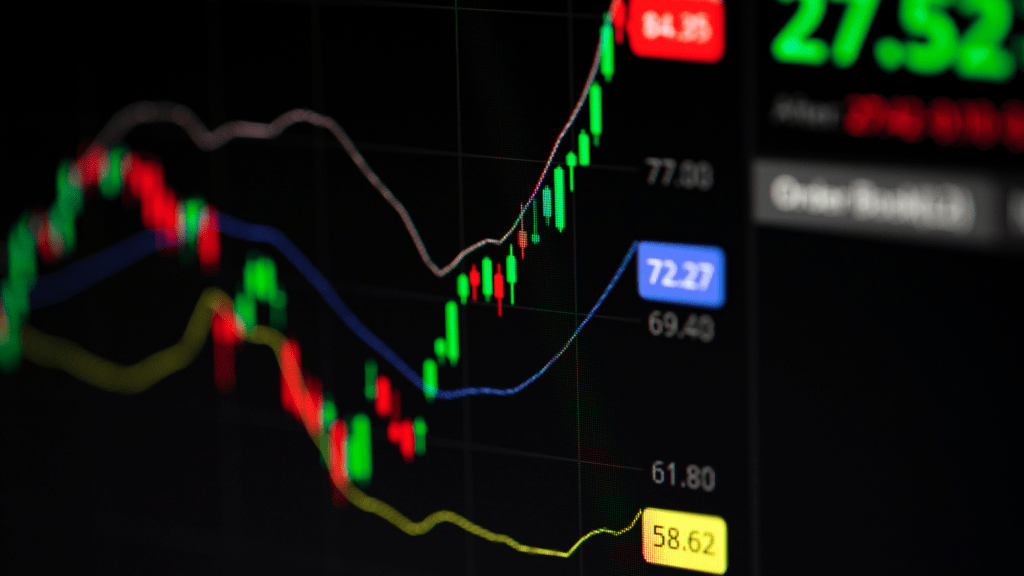In today’s fast-paced financial landscape, the intersection of global economic trends and cryptocurrency markets has become a focal point for investors and analysts alike. As an avid observer of market dynamics, I’ve witnessed firsthand how shifts in the world economy can send ripples through the realm of digital currencies.
The evolving relationship between traditional financial systems and the decentralized nature of cryptocurrencies presents a fascinating study in adaptability and resilience. Navigating the highs and lows of cryptocurrency markets against the backdrop of ever-changing economic currents requires a keen understanding of the interconnectedness of these realms.
Join me as we delve into the intricate dance between global economic forces and the volatility of digital assets. Stay tuned to explore how the ebb and flow of economic trends shape the future of cryptocurrency markets in an increasingly interconnected world.
Overview of Cryptocurrency Markets
Cryptocurrency markets are closely intertwined with global economic trends, requiring a keen awareness of external factors that influence their value and stability. Understanding the broader economic environment is essential for interpreting cryptocurrency price fluctuations and market behavior.
By exploring the relationship between global trends and cryptocurrency markets, valuable insights into this sector can be gained. Like traditional financial markets, cryptocurrency markets are affected by factors such as inflation rates, interest rates, geopolitical events, and trade policies.
Economic instability in major markets often drives interest in cryptocurrencies as a hedge against traditional assets, while regulatory changes and monetary policies can directly impact their value. The interconnectedness of these markets highlights the importance of continuous monitoring and analysis.
Participants must stay informed about economic indicators, central bank decisions, and geopolitical developments to anticipate impacts on cryptocurrency prices. The volatility of digital assets demands a proactive approach to risk management and strategic decision-making.
By staying attuned to global economic trends, market participants can navigate the cryptocurrency landscape with greater insight and agility. The evolution of digital currencies will be shaped by macroeconomic forces, making it crucial for stakeholders to remain adaptable and informed in this evolving asset class.
Influence of Global Economic Trends
In understanding the impact of global economic trends on cryptocurrency markets, it’s crucial to analyze specific economic indicators that directly affect digital assets’ performance.
Economic Indicators Affecting Cryptocurrencies
- Influence of Economic Indicators: Key economic indicators like inflation rates, interest rates, and GDP growth significantly shape cryptocurrency prices, with rising inflation prompting investors to seek cryptocurrencies as a hedge against devaluation.
-
Demand for Digital Assets: Low-interest rates can increase demand for digital assets as alternative investments, highlighting the importance of understanding these indicators for predicting market movements and making informed investment decisions in the crypto space.
Geopolitical Events and Cryptocurrency Prices
Geopolitical events like regulatory developments, trade disputes, and political unrest can have a profound impact on cryptocurrency prices. For instance, a government crackdown on digital assets in a major market can lead to a significant drop in prices.
Conversely, positive regulatory news or adoption by influential countries can boost investor confidence and drive up prices. By closely monitoring geopolitical events and their potential implications on the cryptocurrency market, investors can proactively adjust their strategies to mitigate risks and capitalize on opportunities.
Market Reactions to Economic Trends
Exploring how global economic trends influence cryptocurrency markets reveals crucial insights into the interconnected nature of these financial landscapes. Economic indicators like inflation rates, interest rates, and GDP growth play a pivotal role in shaping the performance of digital assets.
Inflation rates, for instance, can drive investors towards cryptocurrencies as a method of safeguarding their wealth against devaluation. Similarly, low-interest rates in traditional financial instruments can lead to increased demand for digital assets as alternatives investment opportunities.
Geopolitical events also exert a significant impact on cryptocurrency prices. Governmental crackdowns or positive regulatory changes can create substantial fluctuations in market confidence and asset valuations. By attentively monitoring these economic indicators and geopolitical shifts, market participants can navigate the complexities of cryptocurrency markets, enabling them to make well-informed decisions in response to economic developments.
The dynamic relationship between global economic trends and cryptocurrency markets underscores the necessity for adaptability and informed engagement in this rapidly evolving financial domain. Staying abreast of macroeconomic forces ensures that participants in the cryptocurrency sphere can position themselves strategically to capitalize on opportunities arising from economic events.





